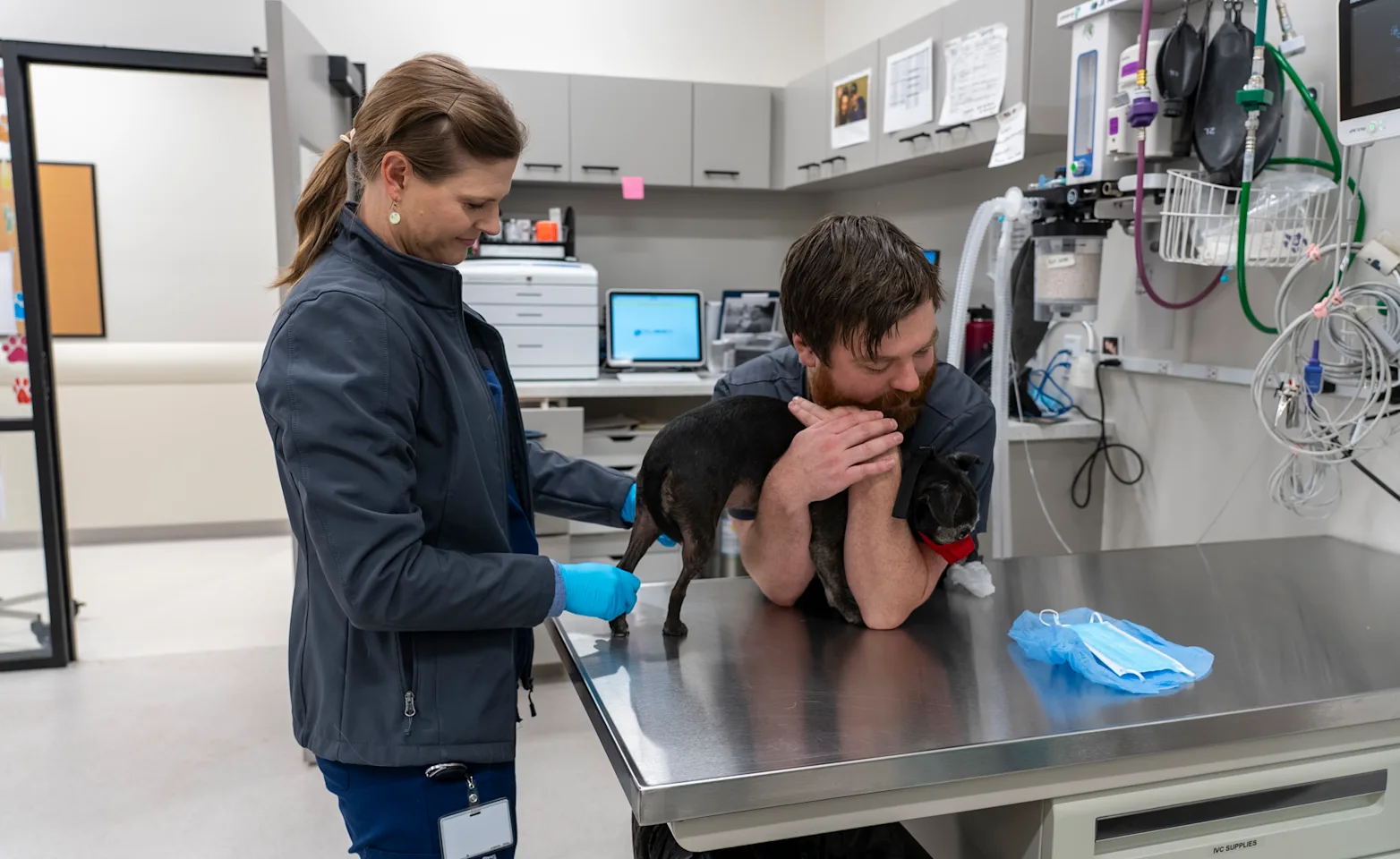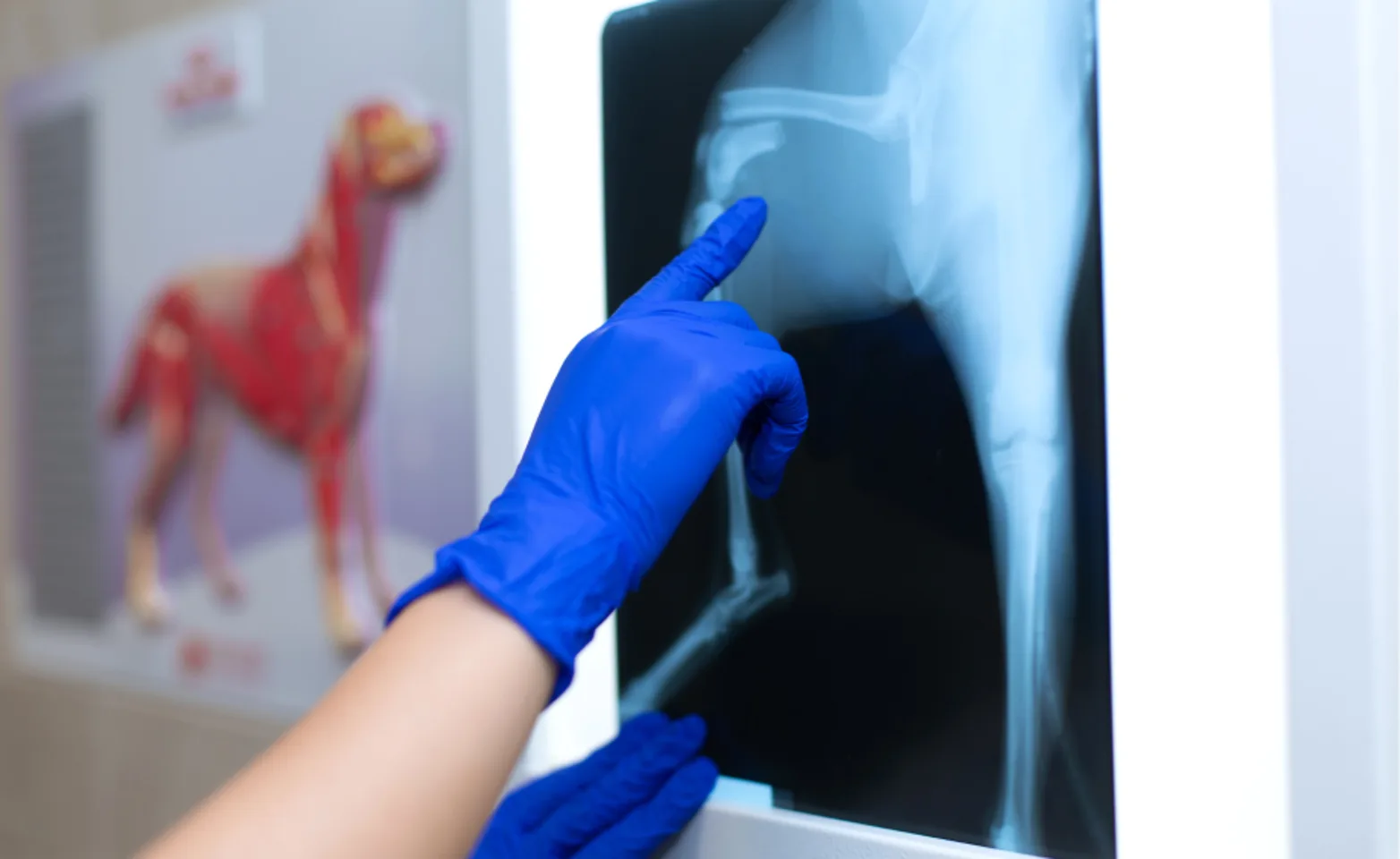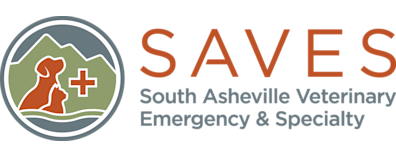South Asheville Veterinary Emergency & Specialty

Overview
When your pet needs surgery, you want a highly skilled and experienced team to handle their care. Our veterinary surgeons have experience with a variety of soft tissue and orthopedic surgeries, and can handle the most challenging procedures. Soft tissue surgeries involve a pet’s skin, muscles, and organs, while orthopedic surgeries involve their bones, joints, and supporting structures.

What diagnostics will be performed before my pet’s surgery?
Prior to your pet’s surgery, our veterinary surgeons may use a variety of diagnostic tests to gain as much information about their case as possible. Some of these diagnostics may require sedation or anesthesia. Diagnostics that may be used include:
Blood work
X-rays
Ultrasound
Computed tomography (CT)
Magnetic resonance imaging (MRI)
Soft tissue surgeries performed by our SAVES surgeons include:
Tumor removal
Internal and external masses or tumors ranging from simple to complex
Gastrointestinal surgery
Foreign body removal, intestinal resection and anastomosis, stomach surgery (e.g., gastropexy, GDV, resection)
Spleen removal
Spleen Removal
Liver and gallbladder surgery
Liver lobectomy, gallbladder removal, liver shunt surgery, biliary diversion
Cardiothoracic surgery
Lung lobectomy, chylothorax and pyothorax treatment, PDA ligation, vascular ring anomaly surgery
Urogenital surgery
Cystotomy, nephrectomy, ectopic ureter treatment, ovariectomy and ovariohysterectomy, urethral and ureteral blockage
Hernia surgery
Diaphragmatic, perineal, inguinal, umbilical, and traumatic hernia repair
Head and neck surgery
Ear canal ablation, parathyroid mass removal, thyroidectomy, salivary gland and lymph node removal
Respiratory tract surgery
Brachycephalic airway, laryngeal paralysis
Wound care and reconstruction
Wound care and reconstruction
Minimally invasive surgery
Laparoscopy and thoracoscopy
Orthopedic surgeries performed by our SAVES surgeons include:
Cranial cruciate ligament rupture treatment
Tibial Plateau Leveling Osteotomy (TPLO), lateral suture (extracapsular) stabilization
Treatment of hip conditions
Femoral head ostectomy, hip luxation repair
Fracture repair
Dynamic compression and locking plate repair, external fixator placement
Ligament and tendon repair or reconstruction
Collateral ligaments, patellar ligament, common calcaneal tendon
Patellar luxation repair
Patellar luxation repair
Angular limb deformity correction
Angular limb deformity correction
Arthrodesis
Arthrodesis
Arthroscopy
Shoulder, elbow, stifle arthroscopy
Joint injections
Platelet Rich Plasma, hyaluronic acid, steroid injections
Yes, anesthesia is used to ensure pets do not feel any pain or discomfort during surgery. However, many pet owners are understandably concerned about their pet undergoing anesthesia. While anesthesia always involves a small degree of risk, we use the safest medications and techniques available to ensure the best outcome for your pet. Our anesthesia team performs a thorough diagnostic workup prior to your pet’s procedure to gain valuable insight into their health status.
Pain management is one of our top priorities. Our anesthesia team will assess your pet’s pain level prior to their procedure, and formulate a specific pain management protocol for their condition. Patients typically receive pain medication before surgery, because preventing pain is easier than treating it once it has developed. Additionally, we believe that no pet should endure unnecessary discomfort. During surgery, the anesthesia medications used will also prevent pain. During your pet’s surgical recovery, our anesthesia team will monitor their pain levels closely, and provide pain medication as necessary throughout their hospital stay. In order to best prevent and treat pain following surgery, many pets will stay in the hospital for monitoring post-operatively. Most pets also go home with pain medication that you will administer during their extended recovery.
